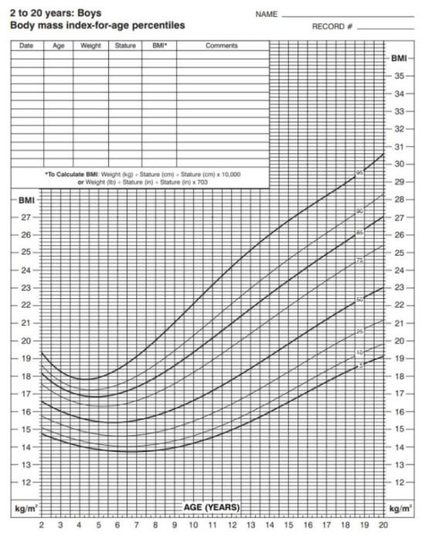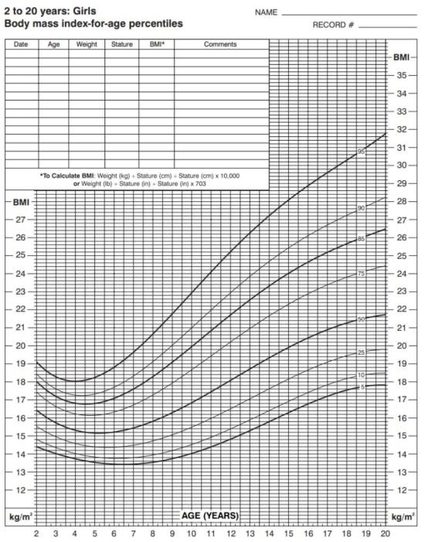BMI Calculator for Kids
Welcome to the BMI calculator for kids, a tool that works as both a BMI calculator for girls and a BMI calculator for boys. We also provide a BMI chart for kids, information on how to interpret it, and why the BMI for boys and BMI for girls differ. Read on to understand what a healthy BMI for kids is while learning more about the body!
We try our best to make our Omni Calculators as precise and reliable as possible. However, this tool can never replace a professional doctor's assessment. If any health condition bothers you, consult a physician.
What is BMI?
BMI is a measurement of the body's mass that takes into account not just the weight of a person, but also their height. The acronym BMI stands for Body Mass Index, and it is very easy to calculate on your own, though it's even easier if you use our BMI calculator for kids. If you insist on doing it on your own, here is the BMI formula:
where both weight and height should be in SI units (i.e., kg and m); this then makes kg/m² the units of BMI. That is not the only unit we can use, but it is the most widespread, even in the USA. That is due to these units being used by the World Health Organization (WHO) for setting the limits and acceptable ranges of BMI.
Why BMI for kids?
We often say that kids are just tiny people, and in many ways, they are. But in terms of physical development, they are still in the making, which means that a lot of the rules and risks that apply to adults don't apply to kids. The same is true for the BMI of kids. When we are talking about the BMI for boys or the BMI for girls, many factors make it virtually impossible to compare them sensibly to an adult.
At Omni, we took this into account, and we have separated our BMI calculators into 5 groups. These include a general BMI calculator and other calculators specific for each of the most easily divisible population groups: women, men, teens, and children. If you are looking for one of our other calculators, here are links to all of them:
- General BMI calculator;
- BMI calculator for men;
- BMI calculator for women; and
- BMI calculator for teenagers.
There is a distinction between the BMI for kids and BMI for teens that might seem arbitrary, but we have made such a separation to account for physical changes in individuals. As kids approach puberty, their bodies begin to transform; thus, their BMI varies accordingly. We set the distinction at 10 years old since that's the age at which you can expect some girls to start experiencing puberty and their bodies start transforming from a child's body into a woman's body. Boys undergo a similar process 2-3 years later on average.
Feel free to navigate to any of the calculators or come back to them later, even if you don't belong to that group you might find out some interesting information about BMI and how it relates to health. For now, though, we will focus primarily on the BMI for kids, including how to use this calculator as a BMI calculator for boys or a BMI calculator for girls.
BMI chart for kids and the healthy BMI for kids
In some of our other BMI calculators, we mention the statistical nature of BMI and its inherent problem when using it as a diagnostic tool. For kids, however, this problem is exacerbated. When looking at BMI for boys or BMI for girls, doctors always use a percentile BMI chart for children so they know how beneficial the results are. We will explain later what percentiles are, but for now, know that it's a tool used to compare an individual with the rest of the population.

Apart from the shortcomings of BMI as a diagnostic tool, the reason for this comparison is the immense variation in features that affect the BMI for kids. We have things like body type and proportions of lean body mass to body fat or even body water percentage that also affect adults (due to the difference in density of all those components). But there are also things specific to BMI for kids, such as their current development phase and whether they are in a growth spurt or have just had one; the variations are bigger than for any group of adults.
It is for this very reason that the most common way to diagnose a healthy BMI for a child is by simply comparing the BMI for one boy with the BMI of all boys the same age as them (and, obviously, the same for girls). Doctors use what is typically called a "BMI chart for kids", also referred to as a "_BMI chart for children," to make this comparison. This data is shown in the charts above and below, and they represent a compilation of all of the collected BMI data for kids in the USA, hence the name BMI chart for kids.
To read this BMI chart for children properly, you must first find the BMI for the girl or the BMI for the boy that we are interested in (we have instructions below on how to do that using our calculator), and then locate it in the chart by looking at their age and BMI. The area it would have landed on represents the percentile he or she is in.

For most cases, a child has a healthy BMI if it is in the range of 5% to 95% of the population's BMI. This population, of course, includes only kids in their age range.
BMI prime and healthy BMI percentiles for kids
Now we probably ought to explain a couple of terms that we have used in the preceding text and in the BMI calculator for kids, starting with BMI prime. This is a quantity derived from BMI and can be defined using the following equation:
The reason behind dividing a person's BMI by 25 is that this value is what WHO deems to be the ideal BMI for adults. BMI prime is not a particularly relevant value when we are talking about BMI for children. Still, we have included it nonetheless for completeness and so that you can compare not only the values of BMI for kids with that of adults but also do the same with the prime version if you wish.
And now we shall swiftly move on to another result provided by our BMI calculator for kids: the percentiles.
Percentiles are statistical groups based on the percentage of the population that have a smaller BMI than the subject. These tend to be very important across all populations, but they are crucial when discussing BMI for girls and BMI for boys.
Percentiles are generally set in chunks of several percentages to simplify and help in comparing individuals in a meaningful way. For our BMI calculator for children, we have selected 9 different percentiles as possible results: 5th, 10th, 25th, 50th, 75th, 90th, and 95th. The number in the percentile category tells you the percentage of the population in the United States with a BMI lower than yours.
How to use the BMI calculator for kids
Calculating the BMI for children by hand is not very difficult, but we have made it even simpler with our BMI calculator for girls and boys. Using our calculator will save time and avoid mistakes when comparing the obtained values with the BMI charts for kids.
Here are the steps for using the BMI calculator for kids effectively:
- Input the kid's height (the units don't matter because the calculator will convert them to the right ones for the equation).
- Input the kid's weight (choose the units you love the most).
- The values for BMI prime and BMI for girls and boys will be computed immediately.
You can also select the child's sex and enter its age in years under the "How healthy is this BMI?" heading of our tool to obtain the correct percentile the child is in. The percentiles and categorization according to the BMI for kids will be displayed as text.
As you can see, it is a straightforward process to complete and greatly simplifies the process of checking the percentiles and BMI for children. If you still want to check the results by hand, feel free to do so; you can use the BMI charts for kids that we showed you above. Be sure to choose the right one depending on whether you want to see the BMI for a boy or the BMI for a girl.
Differences between BMI for boys and BMI for girls
You can probably tell by 'popular wisdom' that the healthy BMI for girls and boys is not going to be the same, but let's take a closer look at why this is so. First, there are differences between boys and girls that are the same as those between men and women, only more subtle due to puberty, a process which is still to occur for most children at these ages.
Secondly, there are differences in the physical development between boys and girls that causes the BMI for boys and girls to differ. These differences are more pronounced in the later years of childhood and the beginning of the teenage phase, as girls tend to begin to develop earlier than boys.
Although physical development only has a very slight impact on the differences in BMI for girls and boys, it becomes very apparent when we talk about BMI for teens. You can see this effect in the BMI charts for kids since, at younger ages, BMI for boys and girls are quite similar, but they start to diverge as children hit puberty and the physical traits that distinguish males and females develop to an adult level.
Just remember that BMI for kids should not be a point of concern, since children grow and develop at different rates and in different ways. Unless their BMI falls to extreme levels, there is no need to try and have a child keep an ideal body weight with tight margins. As long as a kid is getting enough healthy food and is reasonably active, there shouldn't be anything to worry about; let them play, let them eat, and love them thoroughly.